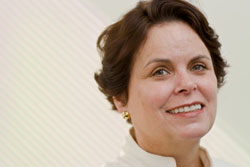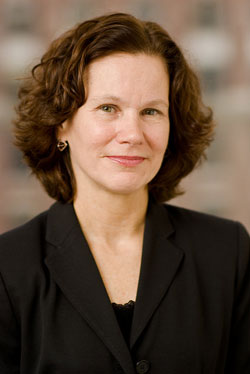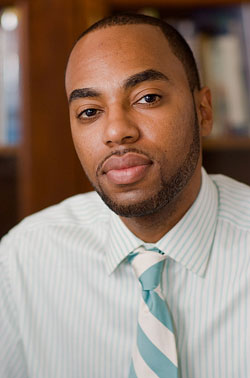New Faculty and Their Interests: Education in Many Forms
New Faces at TC
New faculty share their perspectives and experience
Carol GarberAssociate Professor of Movement Sciences
What fields will you be teaching?
Exercise (Applied) Physiology and Physical Activity and Health. We are still working out the courses that I will be teaching-I expect that I will be adding some new courses over time which will be in the area of physical activity and health and clinical applications of physical activity interventions. For the immediate future, I will be teaching applied physiology lectures and labs.
What has been the focus of your research?
My research is on the role of physical activity in preventing and treating chronic diseases such as coronary heart disease, chronic renal failure and Parkinson's Disease. I am interested in learning more about how to develop more effective programs to increase physical activity-to date there has been little long term success in interventions aimed at increasing physical activity-as well as demonstrating the physiological and functional outcomes (benefits) resulting from physical activity programs.
What are your academic passions?
I think the body is absolutely amazing and enjoy sharing my passion about learning more about how it works, particularly under stressful conditions such as exercise. I love to analyze how changing physical and physiological conditions affect the various body systems. I enjoy challenging students to think critically about how the body may respond under these changing conditions and how to apply scientific knowledge to clinical practice. I enjoy the challenges presented to me by my students, and I am excited as I watch them grow as they proceed through their academic program. I also enjoy working with patients and teaching them about exercise and helping them to improve their health. My patients teach me a lot, and they often help me to discover clinically-relevant problems to be addressed in my research.
Chris Emdin
Assistant Professor of Science Education
What fields will you be teaching?
I will be teaching courses in science education and urban education. This will include courses on methods for teaching sciences, seminars in urban science education and other science education courses that take a global systems perspective to investigating natural phenomena and their impacton research, curriculum, teaching and learning in the sciences and in urban classrooms.
What was the academic path that led you to TC?
I earned my Ph.D. in Urban Education with a concentration in Mathematics, Science and Technology from The Graduate Center of the City University of New York, my M.S. in Natural Sciences from Rensselaer Polytechnic Institute and my B.S. in Physical Anthropology, Biology and Chemistry from Lehman College. I have been an instructor at Lehman College, where I coordinated the Science Education program. I have also taught middle school science and mathematics, high school physics and chemistry, and have chaired science departments inNew York City public schools. I co-authored the proposal to open the Marie Curie School in the Bronx and have been a researcher on NSF funded research projects in mathematics and science education.
What are your academic passions?
My academic passions are science education reform and implementing multilayered and multifaceted research that positively impacts science teaching and learning for marginalized students. I picture my research as a Rubik's cube of sorts, layered with theory and practices about teaching and learning science that are historically and socially constructed and composed of multiple faces-the lives and experiences of students in urban classrooms of various backgrounds. My broad research goals include topics such as educational equity, fostering interest and success in science, and creating arenas where students are given the voice to inform the teaching of science. The overarching goal, the solving of the Rubik's cube, is attained when the disconnects that exist between science teaching/schooling and urban students life-worlds are completely bridged. While this utopia in urban science education may never be truly actualized, the continuous quest for the ideal science classroom for students in urban schools has led me to an engagement in participatory action research that explores student rituals and communal practices, students' socio-emotional connections to the science classroom and other transformative research agenda that continually emerge from my ongoing research in urban science classrooms.Regina Cortina
Associate Professor of Education
What do you teach?
I teach courses in comparative and international education. With other faculty members in my department, we are creating a Faculty Working Group on Latin American and Latino/a Education. Our goal is to unify and expand our research, teaching and service in this field in order to strengthen existing programs and pursue new initiatives. Growing out of my research, one course I have been teaching over the years, and will teach next semester, is "Education across the Americas," emphasizing the social dimensions of education, class, gender and race. Another course I teach is "Latinos in Urban Schools," which focuses on the critical educational issues facing Latinos in the United States.
What has been the focus of your research?
I have pursued an active agenda in interdisciplinary, comparative and international research throughout my career. In addition to my research on gender equity and education among girls and women in Latin America, my areas of expertise include the education and employment of teachers, comparative education in Latin America, public policy and education in Mexico, educational attainment among the poor in Latin America, and the schooling of Latin American-born students in the United States. My books include Distant Alliances: Promoting Education for Girls and Women in Latin America (2000); Lderes y construccin de poder: Las maestras y el SNTE (2003) [Leaders and the Construction of Power: Women Teachers and the National Teachers' Union in Mexico]; Immigrants and Schooling: Mexicans in New York (2003) based on my study of the Mexican migration to New York; and Women and Teaching: International Perspectives on the Feminization of a Profession (2006), concerning the causes and consequences of the feminization of teaching in Catholic countries in Europe, Latin America, the Caribbean, along with Britain and Canada.
What are your academic passions?
Since the late 1990s, a key focus of my work has been the impact of human migration on schools in the United States. As background for this emphasis, I should add that mass migration of Mexicans to the eastern seaboard started in the 1990s. This same phenomenon is bringing them from Florida to New York State. I have conducted research and made presentations on the migratory circuits that are bringing a larger and larger number of Latin American-born students to schools in theUnited States. My efforts aim to create a greater understanding of the needs of these students. Toward that end, I work actively with teachers and educational leaders to shape policies and practices that will expand educational opportunities for Latino students. Since the publication of my book on Mexican children in the public schools of New York, I have expanded my research along those lines to look more broadly at Latinos generally in New York City, offering an interpretation of patterns visible among the City's three largest Latino groups: Puerto Ricans, Dominicans and Mexicans. In all of my work, I am strongly committed to producing a new generation of graduate students, scholars and educational leaders who can help to create effective schools for the great diversity of students seeking opportunities to learn and grow in the United States today.Published Friday, Nov. 16, 2007


